Catholic

The findings show that as many as 45 percent of Americans will look at the church brand on the sign out front — Catholic or Baptist or Methodist or whatever — and drive past, thinking it is “not for me.”
And yet, McConnell said, the survey reveals an openness in most people — if not a very theologically deep one — to stopping by, even if they declare no religious identity, the “nones.”
“Many people view a church like the ice cream parlor down the road. They think, ‘When I’m in the mood, I can go.’ Church leaders can take it as good news: People haven’t ruled them out. But they have to be a little unsettled at how little people are thinking about this,” said McConnell.

A new report mapping the Catholic Church’s more than 1.2 billion souls — on track to reach 1.64 billion by 2050 — holds some surprises.
And not all bode well for the church’s future as it faces major demographic and social shifts.
“Global Catholicism: Trends & Forecasts,” released June 1 by the Center for Applied Research in the Apostolate at Georgetown University, looks at seven regions of the world. It wraps the United States, Mexico, and Canada in with Central and South America as simply the Americas.
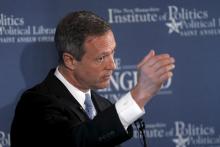
Martin O’Malley, who just wrapped up his second term as Maryland governor, is loudly, proudly Catholic — even when some doctrine-devoted church followers hiss at his socially liberal views.
Here are five faith facts about O’Malley, 52, who is expected to announce his candidacy on May 30.
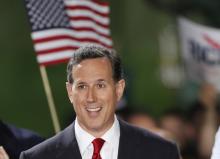
He won 11 primaries in 2012 with his devoutly Catholic, homeschooling-dad culture-warrior campaign. On May 27, he declared for the 2016 race with his traditionalist moral views freshly sharpened.
Here are five faith facts about Santorum.

A few decades ago, there were two options for people who wanted to follow Jesus but were attracted to the same gender: They could either throw off religion and embrace their sexuality, or they could remain in the faith and hide their sexual orientations. Today, there are other options. Some — like Matthew Vines and David Gushee — are attempting to make a biblical case for same-sex relationships. Others — such as Julie Rodgers and Wesley Hill — are leading a movement of celibate gay Christians.
Among the second group, Eve Tushnet has risen to prominence. She has a popular blog hosted by the Patheos Catholic Channel and has created a stir with her book Gay and Catholic: Accepting My Sexuality, Finding Community, Living My Faith. We asked her why it is important to her to self-identify as a lesbian and whether she’s missing something about the uniqueness and importance of erotic intimacy.
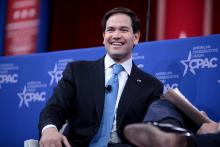
Sen. Marco Rubio (R-Fla.), who is expected to launch his presidential campaign April 13, often talks about faith and wrote about his religious convictions in his 2012 book, An American Son: A Memoir.
Here are five faith facts about this Catholic son of Cuban immigrants who has also found comfort in Mormonism and a Southern Baptist church:
1. He was once a serious young Mormon.
Rubio’s parents baptized him Catholic and he is now a practicing Catholic, but when he was 8, his family moved from South Florida to Las Vegas, where his mother attributed the wholesomeness of the neighborhood to the influence of the Mormon Church. Young Rubio was baptized again, this time in the Church of Jesus Christ of Latter-day Saints. He spent three years as a Mormon, upheld its teachings more enthusiastically than his parents, and chided his father for working as a bartender, a no-no for Mormons who abstain from alcohol.
2. He frequents a Southern Baptist megachurch.
Rubio and his wife Jeannette often visit Miami’s Christ Fellowship, a Southern Baptist congregation the couple appreciates for its strong preaching and children’s programs. Rubio has donated at least $50,000 to the church, which he attended almost exclusively from 2000 to 2004. But he now finds his religious home in Catholic churches in Washington, D.C. and Florida. In his memoir, Rubio writes that he will go with his family to Christ Fellowship on Saturday nights, and Mass on Sundays at St. Louis Catholic Church. His children have received First Holy Communion.
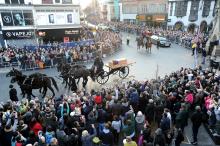
Tens of thousands of people in Leicester — England’s most religiously diverse city — are getting ready to honor the memory of a long-despised English king with a ceremony that testifies to the already warm relationship between the Church of England and the Roman Catholic Church.
The bones of King Richard III — who was slain in battle in 1485 and vilified in the writings of William Shakespeare, who described him as a “poisonous bunch-back’d toad” — will be interred at Leicester Cathedral on March 26 at a ceremony led by Archbishop of Canterbury Justin Welby and attended by leading Catholics, Buddhists, Hindus, Sikhs, and Jews, as well as members of England’s royal family.
Richard was the last king of England to die in battle while attempting to defend his throne from Henry VII. The latter went on to establish the Tudor dynasty, whose most memorable monarch was Henry VIII.
After the battle, Richard’s remains were hastily buried by Franciscan monks. In 2012, archaeologists digging in a parking lot found his remains and had the DNA checked with a known survivor of the king’s family.
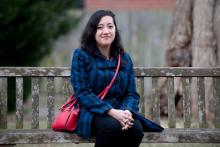
Nadia Bulkin, 27, the daughter of a Muslim father and a Christian mother, spends “zero time” thinking about God.
And she finds that among her friends — both guys and gals — many are just as spiritually disconnected.
Surveys have long shown women lead more active lives of faith than men, and that millennials are less interested than earlier generations. One in three now claim no religious identity.
What may be new is that more women, generation by generation, are moving in the direction of men — away from faith, religious commitment, even away from vaguely spiritual views like “a deep sense of wonder about the universe,” according to some surveys.
Michaela Bruzzese, 46, is a Mass-every-week Catholic, just like her mother, but she sees few of her Gen X peers in the pews.
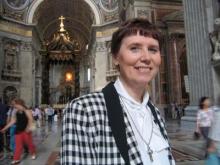
ROME — On its 15 previous pilgrimages, the Catholic gay rights group New Ways Ministry drew maybe two-dozen people to visit holy sites in places like Assisi and Rome.
This year, the number of pilgrims unexpectedly doubled to 50.
Chalk it up to the so-called Francis Effect, where the pope’s open-arms acceptance is giving new hope to gay and lesbian Catholics who have felt alienated from their church for decades.
What’s been even more surprising is that both New Ways and a similar Catholic LGBT organization in Britain are finding support from the Catholic hierarchy in their efforts to meet the pontiff when they both visit the Vatican on Ash Wednesday, the start of Lent, the period of penance and fasting preceding Easter.
For example, Archbishop Georg Ganswein, head of the papal household and the top aide to Pope Emeritus Benedict XVI, responded to New Ways’ request for a papal meet-and-greet by reserving tickets for the group at Francis’ weekly public audience in St. Peter’s Square. It’s not a private meeting — which is tough for anyone to get — but it’s not nothing.
IN THE LARGEST currency change that the world has ever seen, the euro was launched on New Year’s Day 2002 with great excitement and ceremony in 12 eurozone member countries. At the time, the shared currency was considered to be a vehicle for tying together separate states and cultures with numerous economic benefits, particularly to trade, employment, and tourism.
Now imagine a humble, 90-year-old Catholic priest, vibrant yet shrunken and bent with age. In Italian, he addresses a group about the euro in the celebratory year of its launch. In one hand he holds up an unconsecrated host; in the other, a one-euro coin. They are the same shape, and nearly the same size. But the coin is shiny silver and gold. The priest speaks simply and directly about how, despite their similar appearance and promise of life enrichment, the euro is deceptive. The dominance of finance and capitalism that it supports is a false idol, he says, which leads to addiction.
This story was recounted by a number of Italian press outlets at the time. It contributes to the mythos of this man who writes extensively about the Eucharist, which he believes, in contrast to the euro, creates a relationship not just with God but with our fellow human beings.
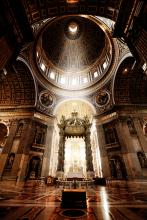
THE VATICAN REPORT on the three-year investigation of U.S. Catholic sisters landed softly in the national media in December, as major stories combined with Christmas to fill the news cycle. Good timing, if the intent was to bury it. But the story isn’t over.
Some years ago, two Vatican offices, under the leadership of Pope Francis’ predecessor, Pope Benedict XVI, launched separate investigations of U.S. women religious, first of the individual orders and later of their leaders’ membership organization.
Why? The general consensus seems to be that high-ranking conservative U.S. bishops were angry at sisters who had generally served as obedient poorly paid minions to do their bidding, but who now were infected with a certain “feminist” outlook on life.
A September 2008 conference on religious life, held at Massachusetts’ Stonehill College, gathered conservative voices critical of how U.S. sisters had “modernized” following the Second Vatican Council. Within a few months, a Vatican office (the “Congregation for Institutes of Consecrated Life and Societies of Apostolic Life”) announced it would survey every group of “active” (vs. contemplative) U.S. Catholic sisters.

While some people may have heard of the great work of Nuns on the Bus to engage people on pressing social issues, there’s also the “Nuns on the Underground Railroad”—a quiet movement of nuns working together to restore dignity and healing for victims of labor and sex trafficking across the nation and the world...
For several years now, Catholic nuns have been proactive in preventing sex trafficking before, during, and after major sporting events like the Super Bowl by raising public awareness and conducting personal visits to hotels to alert them to the signs of human trafficking. Nuns have also placed full-page ads in airline magazines to educate the public about the dangers of child trafficking.
A fundamental theological and scriptural principle for Christians is that each human person is made in the image and likeness of God. This belief in the imago Dei helps us to see the face of God even when the person doubts her own beauty and worth because of oppression. “Nuns on the Underground Railroad” seeks to restore a person’s sense of dignity and beauty through two rails of freedom: healing through programs and shelters and empowerment through education and employment.
As we move toward the Lenten season, the prophet Isaiah reminds us: "Is not this the fast that I choose: to loose the bonds of injustice, to undo the thongs of the yoke, to let the oppressed go free, and to break every yoke?" (Isaiah 58:6)
How is God moving your heart as you awaken to the stories of human trafficking victims? What action can you take for your enslaved sister and brother? What will you bring to your faith community to stir up concern? One single action to educate others and liberate the oppressed strengthens freedom throughout the world. As our mission affirms, “Ending slavery is everyone’s work.”

Pope Francis nominated 15 new cardinals Jan. 4 from 14 different nations but leaving several leading U.S. archbishops off the list.
Speaking to a crowd gathered in St. Peter’s Square, the pontiff named each cardinal, noting they came from every continent and “show the indelible tie with the church of Rome to churches in the world.” At least three are from nations that have never had a church member in the role.
Five of the cardinals come from Europe, three from Asia, three from Latin America, and two each from Africa and Oceania.
The nations of Cape Verde, Tonga, and Myanmar received their first cardinals ever, Vatican spokesman Fr. Federico Lombardi said in a statement.
IN OCTOBER 1968, the renowned Trappist monk and spiritual writer Thomas Merton set out for Asia on what would be his final pilgrimage, desiring “to drink from [the] ancient sources of monastic vision and experience.” From his monastery in Kentucky, he had long dreamed of meeting with Buddhist teachers face to face, close to the sources of Eastern mysticism, and fulfilling what he believed to be the vocation of every Christian: to be an instrument of unity.
Three times during his journey Merton met with the young Dalai Lama, who would later say, “This was the first time that I had been struck by such a feeling of spirituality in anyone who professed Christianity. ... It was Merton who introduced me to the real meaning of the word ‘Christian.’”
After Merton’s sudden death in Bangkok on Dec. 10, 1968—the result of an accidental electrocution—his body was returned to the U.S. in a military transport plane that carried the bodies of soldiers killed in Vietnam, a war he had condemned forcefully. His body was laid in the earth on a hillside behind the monastery, overlooking the Kentucky woods where he lived as a hermit the last years of his life. Pilgrims from all over the world continue to visit the Abbey of Gethsemani and pray before the simple white cross that marks Merton’s grave. Why? One hundred years after his birth, the question is well worth asking. What particular magic draws seekers of every generation and of such remarkably diverse backgrounds to Thomas Merton?
SON OF A CENTURY
Merton’s appeal to postmodern sensibilities may be explained in part by his own renaissance background. Born in France in 1915 to an American mother and a New Zealand father, itinerant artists who had met in Paris, Merton spent much of his youth traveling between Europe and America. By the time he was 16, both of his parents were dead. He enrolled at Cambridge, but his raucous behavior there quickly prompted his godfather to send Merton back to the U.S., where he enrolled at Columbia University and soon thrived among an avant-garde group of friends.
More and more he found himself drawn to Catholic authors, devouring works by William Blake, Gerard Manley Hopkins, James Joyce, and Jacques Maritain. As he later described this period, something deep “began to stir within me ... began to push me, to prompt me ... like a voice.” To the shock of his friends, Merton announced his desire to become a Roman Catholic and was baptized on Nov. 16, 1938, in New York. Two years later Merton began teaching English at St. Bonaventure. After spending Holy Week of 1941 on retreat at the Abbey of Gethsemani in the hills of rural western Kentucky, Merton decided to become a Trappist monk, part of a Catholic religious order of cloistered contemplatives who follow the 1,500-year-old Rule of St. Benedict.
It was the publication in 1948 of his autobiography,The Seven Storey Mountain, set against the shadow of World War II, that established Merton as a “famous” monk and a wholly unexpected literary phenomenon. In addition to publishing spiritual meditations, journals, and poetry, during the 1960s he published penetrating essays in both religious and secular venues on the most explosive social issues of the day, the religions of the East, monastic and church reform, and questions of belief and atheism.
As a model for Christian holiness, Merton was far from perfect. In fact he took pains to distance himself from his early, more pious writings, and insisted on his right not to be turned into a myth for Catholic school children. He was a restless monk, and often chafed against his vows of stability and obedience. In 1966, during a hospital stay in Louisville, Ky., he fell in love with a young student nurse, and for some six months they had a kind of clandestine affair.
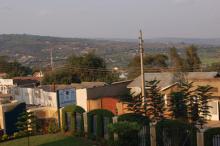
Three elderly Italian nuns murdered in Burundi were laid to rest Sept. 11 in a Xaverian cemetery in the Democratic Republic of Congo amid heightened calls for action about their death.
Sister Lucia Pulici, 75, Sister Olga Raschietti, 82, and Sister Bernadetta Boggian, 79, of the Xaverian Missionary Sisters of Mary were gruesomely murdered Sunday in their convent in the Kamenge area of Burundi’s capital, Bujumbura.
The triple murders shocked Christians across the globe and ignited calls for the protection of sisters worldwide. The nuns were reportedly beaten and killed with a knife. At least one nun was decapitated. There were conflicting reports about whether they had been raped.
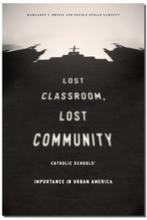
What happens to a community when a Roman Catholic school closes its doors?
That’s the question Nicole Stelle Garnett and Margaret F. Brinig, two Notre Dame law professors, pondered as they studied closures in Chicago, Philadelphia, and Los Angeles.
There were 7,000 Catholic schools in the U.S. in 2010, down from 13,000 in 1960, according to the National Catholic Education Association. The decline, rooted in the migration of parishioners to the suburbs and the secularization of Catholic culture, has been dubbed the “closure crisis” within the church.
Religion News Service asked Garnett about what she and Brinig found in their investigation, which resulted in their new book: Lost Classroom, Lost Community: Catholic Schools’ Importance in Urban America.
The interview has been edited for length and clarity.

A new model of leadership that’s been refined in the fires of change and conflict is emerging from U.S. religious women.
In June, the Institute for Policy Research and Catholic Studies, along with Solidarity with Sisters, invited 150 people to Catholic University for an opportunity to discuss the model of leadership that has developed in Catholic women’s communities around the world over the last 50 years since Vatican II. The event coincided with the release of Spiritual Leadership for Challenging Times, an anthology of 10 addresses given by Leadership Conference of Women Religious (LCWR) presidents.
Catholic sisters are emerging as leaders ahead of their times. From Sister Simone Campbell, SSS, and Nuns on the Bus to Catholic Health Association CEO Sister Carol Keehan, DC, who helped pass the Affordable Care Act, to former LCWR president Sister Pat Farrell, OSF, who practiced authentic spiritual leadership in the face of the Vatican’s ongoing investigation of that organization (an investigation that Pope Francis should have laid quietly to rest, but has not), religious women are getting notice for their thoughtful, faithful leadership in the face of withering criticism and their own communities’ dramatic changes.
What are the marks of this new leadership?
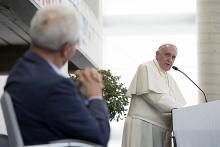
Pope Francis sought forgiveness for decades of persecution of Italian Pentecostals when he met with around 300 evangelicals from the U.S., Argentina, and Italy in the southern town of Caserta on Monday.
The pope made his second visit in as many days to the Mafia stronghold near Naples, this time to meet evangelical pastor Giovanni Traettino, whom he befriended while he was archbishop of Buenos Aires.
During the visit, Francis apologized for the persecution suffered by Pentecostals under Italy’s fascist regime in the 1920s and 1930s and urged Christians to celebrate their diversity and unity.
“Catholics were among those who persecuted and denounced the Pentecostals, almost as if they were crazy,” Francis said.
“I am the shepherd of the Catholics and I ask you to forgive my Catholic brothers and sisters who did not understand and were tempted by the devil.”
Since his election last year, the pope has been reaching out to other faiths and has held talks with Protestant, Jewish, and Muslim leaders. On Monday, he went even further by apologizing for what Catholics had done.
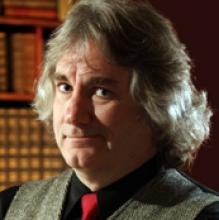
Historians have a term we call the scapegoating concept of history. This is the idea that people tend to look for others to blame — scapegoats — for their condition. They then attack that group even if it had little or nothing to do with their situation.
Islam is currently on the list of things we are supposed to be afraid of. The threat is such that even the president himself is apparently some kind of secret Muslim in league with unsavory characters. We seem to have forgotten that the deadliest example of domestic terrorism in America before Sept. 11, 2001, came at the hands of Timothy McVeigh, who blew up the federal building in Oklahoma City. Despite McVeigh’s claims to loving Jesus, no calls to ban Christianity or close churches sounded following his detestable act.

Most Christians don’t approve of President Obama right now, but he gets high ratings from Muslims and other minority religious groups.
It’s not because of their religion, though.
Obama’s level of popular approval matches Americans’ political party ties, not their religious identity, age or almost any other demographic characteristic, said Jeffrey Jones, managing editor of the Gallup poll.
The newest Gallup tracking poll shows the president’s approval rating in June averaged 43 percent for Americans overall. However, his ratings sank with Catholics to 44 percent, down from 54 percent in June 2013.